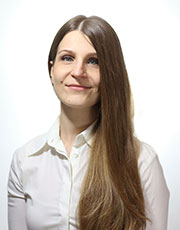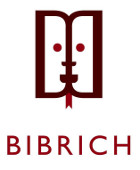13 July 2018
 Dr. Mikołaj Deckert works as assistant professor in the Department of Translation Studies, Institute of English Studies, University of Łódź, Poland. His research is in translation, language and cognition, media discourse, linguistic pragmatics, as well as corpus linguistics. He is the author of the monograph Meaning in Subtitling: Toward a Contrastive Cognitive Semantic Model (2013) and a co-editor of volumes devoted to translation didactics and AVT. Dr. Mikołaj Deckert works as assistant professor in the Department of Translation Studies, Institute of English Studies, University of Łódź, Poland. His research is in translation, language and cognition, media discourse, linguistic pragmatics, as well as corpus linguistics. He is the author of the monograph Meaning in Subtitling: Toward a Contrastive Cognitive Semantic Model (2013) and a co-editor of volumes devoted to translation didactics and AVT. |
| Cognition and translation: The “audience type” parameter Summary: In this talk the general aim is to highlight the productivity of integrating constructs from cognitive psychology into translation research (cf. e.g. Ferreira & Schwieter 2015; Hubscher-Davidson 2017). To that end, I will discuss a set of experimental translational studies on how visual stimuli are processed in film. More specifically, the central question of the talk is about the extent to which attention allocation in different audience types overlaps. This will be examined by looking into processing in individuals who merely watch translated audiovisual material (the “mere viewer” type) and individuals who are required to additionally translate the verbal component in that material (the “translator-viewer” type). The focus is on what can be termed “visual verbal coding” (VVC), i.e. textual information retrievable from the film’s image. The cases of VVC used here are special in that they are not prototypically “ostensive” (cf. Sperber & Wilson 1995). Rather, their ostensiveness is “liminal” as the stimuli do not explicitly draw attention to themselves, for instance because they are backgrounded or because competing (visual) stimuli, possibly more salient ones, are available simultaneously. I will concentrate on two main aspects of liminal VVC across the “mere viewer” and “translator-viewer” groups: a) whether those stimuli are identified by viewers, and b) whether viewers are convinced those stimuli should be translated. The experimental findings will serve as a starting point for the discussion on the depth of processing in varied audience types which can be further categorised along a range of characteristics such as age and education, as well as individual differences. References Translation and transfer in children’s literature: The Croatian perspective. Part II – Future prospects. A colloquium organised by the BIBRICH project team. Zagreb: Faculty of Teacher Education. |
7 July 2018
 Professor Dr. Jan Van Coillie is an emeritus professor. Until October 2017, he was connected to the Faculty of Arts, KU Leuven (Belgium) where he taught Applied Linguistics, Children’s Literature and Children’s Literature and Translation. From 1999 to 2006 he was acting chairman of the Belgian National Centre for Children’s Literature. He has published widely on children’s poetry, fairy tales, history of children’s literature, children’s literature in translation, children, reading and digital media, and children’s literature generally. From 1999 until 2004 he was editor-in-chief of the Encyclopedie van de jeugdliteratuur [Encyclopaedia of Youth Literature]. Since 2006 he has been co-editor of the Lexicon van de jeugdliteratuur [Lexicon of Youth Literature]. He is also active as a critic, author of children’s poetry, and translator of picturebooks. Professor Dr. Jan Van Coillie is an emeritus professor. Until October 2017, he was connected to the Faculty of Arts, KU Leuven (Belgium) where he taught Applied Linguistics, Children’s Literature and Children’s Literature and Translation. From 1999 to 2006 he was acting chairman of the Belgian National Centre for Children’s Literature. He has published widely on children’s poetry, fairy tales, history of children’s literature, children’s literature in translation, children, reading and digital media, and children’s literature generally. From 1999 until 2004 he was editor-in-chief of the Encyclopedie van de jeugdliteratuur [Encyclopaedia of Youth Literature]. Since 2006 he has been co-editor of the Lexicon van de jeugdliteratuur [Lexicon of Youth Literature]. He is also active as a critic, author of children’s poetry, and translator of picturebooks. |
| Mirror, mirror on the wall / Who translates best of all? The magic of fairy tales for translation scholars Summary: We all remember fairy tales; they have been told for centuries and are still immensely popular. Each culture has its own tradition, but fairy tales also very easily cross borders. They belong to the most often translated, retranslated and adapted literary texts. Moreover, as “written folklore”, they are still being retold, rewritten, parodied, etc. All this makes fairy tales most interesting material for translation scholars. What is more, because most fairy tale books contain illustrations, they offer excellent examples for studying the “translation” of text into images. The talk consists of two parts. In the first, I present a model for a comparative analysis of fairy tales in translation. I show how the model works by analysing four translations of one particular fairy tale by the brothers Grimm. In the second part, I dive into the fascinating world of fairy-tale illustrations. With lots of colourful examples, I demonstrate how illustrating is in fact a special form of translating. Translation and transfer in children’s literature: The Croatian perspective. Part I – Breaking the path. A colloquium organised by the BIBRICH project team. Zagreb: Faculty of Teacher Education. |
7 July 2018
 Dr. Anne Ketola is a lecturer in Translation Studies at the University of Tampere, Finland. Her research examines multimodality in translation as well as the translation of children’s literature, especially children’s picturebooks. She is the co-author of Translating Picturebooks. Revoicing the Verbal, the Visual and the Aural or a Child Audience (Routledge, 2018; together with Riitta Oittinen and Melissa Garavini). Ketola is also the initiator and a board member of the Aarresaari (“Treasure Island”) Children’s Book Translation Award, awarded in Finland biennially for an outstanding translation of a book aimed primarily at a child audience. Dr. Anne Ketola is a lecturer in Translation Studies at the University of Tampere, Finland. Her research examines multimodality in translation as well as the translation of children’s literature, especially children’s picturebooks. She is the co-author of Translating Picturebooks. Revoicing the Verbal, the Visual and the Aural or a Child Audience (Routledge, 2018; together with Riitta Oittinen and Melissa Garavini). Ketola is also the initiator and a board member of the Aarresaari (“Treasure Island”) Children’s Book Translation Award, awarded in Finland biennially for an outstanding translation of a book aimed primarily at a child audience. |
|
Translating and transcreating picturebooks: Negotiating the verbal and the visual
Summary: Picturebooks operate on the interface of two different forms of storytelling, the verbal and the visual. Their messages are created in an intimate interaction of words and images, which combine into new conceptual entities by complementing and challenging each other. The process of translating these artifacts from one language to another is a highly creative enterprise, requiring translation solutions that may radically diverge from the traditional standards of translation practice. In fact, as concluded by, for instance, Di Giovanni (2008), the term translation does not always fully account for the transfer of multimodal messages from one language and culture to another. Therefore, some translation scholars now employ the term transcreation – merging translation and (re)creation – to describe processes of transfer which call for extensive adaptations of verbal material in order to create multimodally coherent products for a new target audience. The process of transcreation produces solutions that are “variable, non-uniform and at times non-predictable” (O’Hagan & Mangiron 2013: 106), at least when examined from a verbally informed perspective. References Translation and transfer in children’s literature: The Croatian perspective. Part I – Breaking the path. A colloquium organised by the BIBRICH project team. Zagreb: Faculty of Teacher Education. |
23 February 2018
 Professor Dr. Kaisa Koskinen, professor at the School of Language, Translation and Literary Studies, University of Tampere, Finland. Read more! Professor Dr. Kaisa Koskinen, professor at the School of Language, Translation and Literary Studies, University of Tampere, Finland. Read more! |
|
Retranslating children’s literature (looking at the cases of Alice in Wonderland and Pippi Långstrump into Finnish) Retranslations. A colloquium organised by the BIBRICH project team. Zagreb: Faculty of Teacher Education. |
20 May 2017
 Professor Dr. Nike Kocijančić Pokorn, professor at the Department of Translation studies, Faculty of Arts, University of Ljubljana, Slovenia. Read more! Professor Dr. Nike Kocijančić Pokorn, professor at the Department of Translation studies, Faculty of Arts, University of Ljubljana, Slovenia. Read more! |
|
Who Are the Real Guardians of the Target Text? Translators and their editors Post-Socialist Translation Studies. colloquium organised by the BIBRICH project team. Zagreb: Faculty of Teacher Education. |




